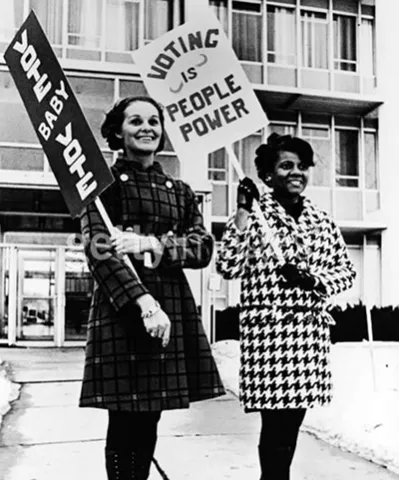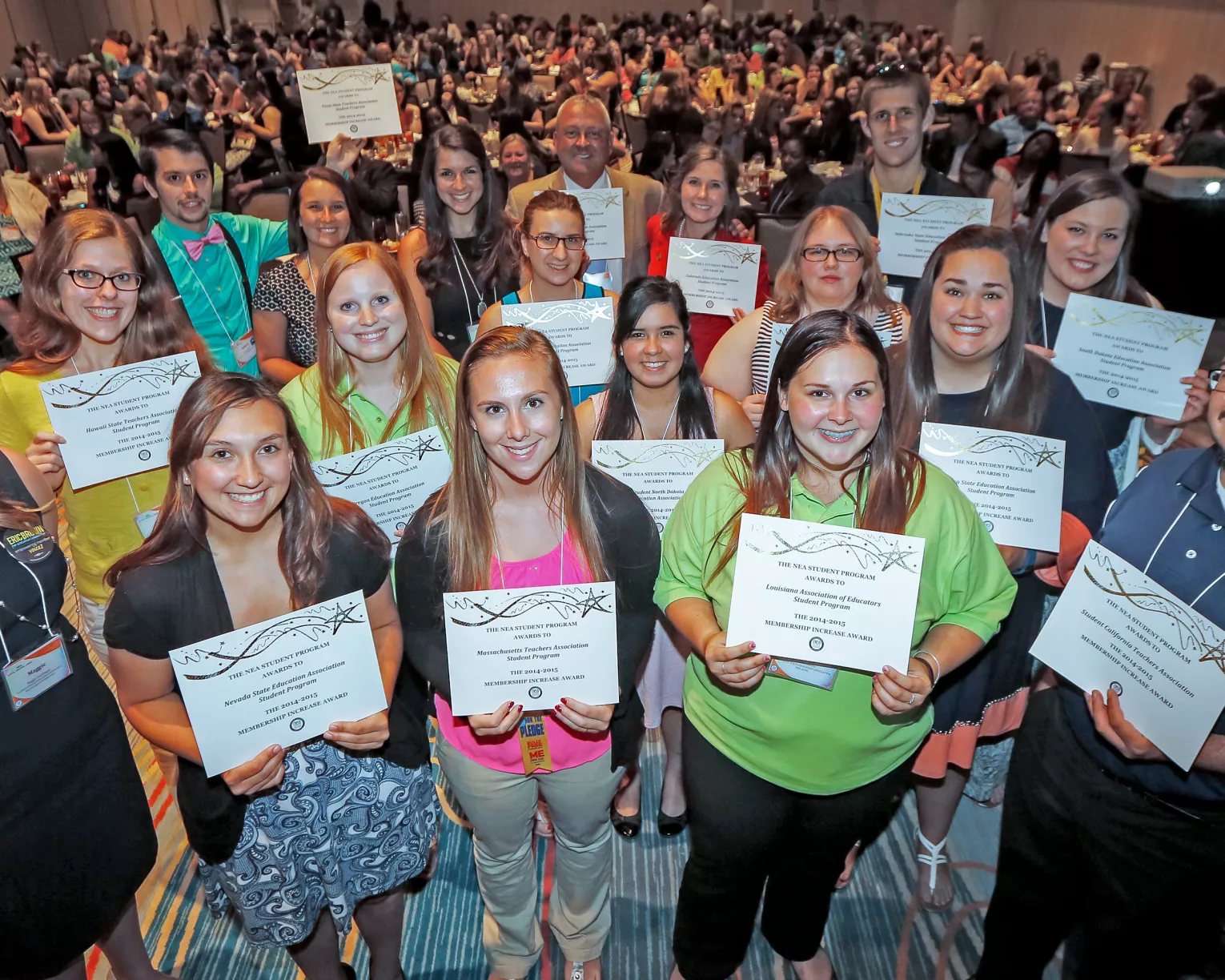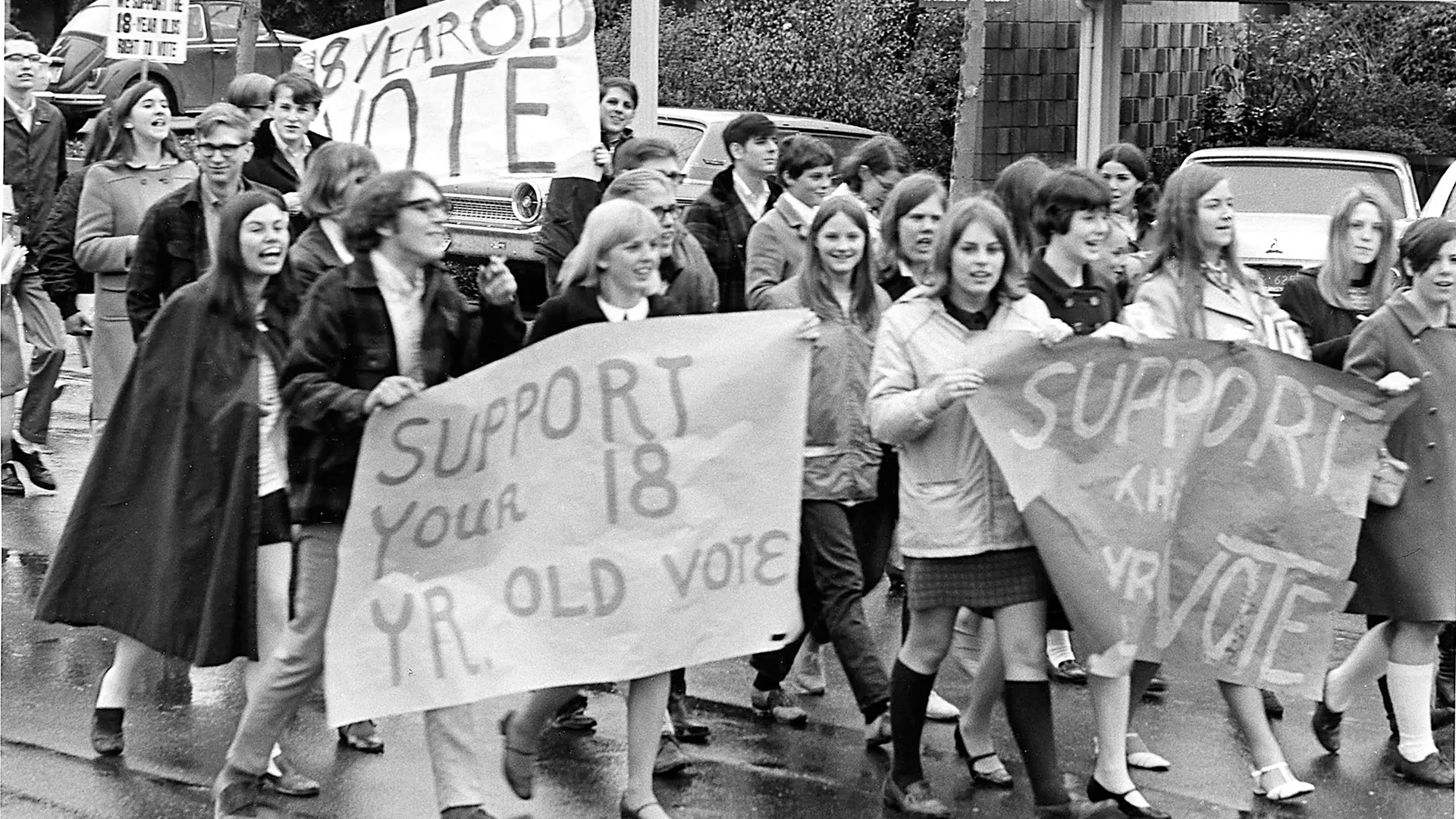Student educators 50 years ago were in the midst of a political and cultural landscape much like the one we’re in today. It was a time of turmoil, dissent, and unrest. But there was one major difference—nobody under age 21 was able to vote.
In March 2021, we mark the 50th anniversary of the 26th Amendment, which lowered the voting age from 21 to 18, allowing millions of young people to participate in the democratic process and to have a powerful voice in shaping their political future.
The 26th Amendment passed faster than any constitutional amendment in history, but it wasn’t an easy process. It took a group of young activists—including members of Student NEA (now NEA’s Aspiring Educators)—to launch Project 18, a national campaign to change the voting age.
“We had to convince people this was serious, and [that] there was a chance to do something now. With the coalition we had and the support of the NEA, we started gaining credibility.”
The first rumblings to lower the voting age emerged in the midst of the Vietnam War, with student demonstrations running strong. The slogan, “old enough to fight, old enough to vote,” gained popularity, and some groups, including student members of the California Teachers Association (CTA), hoped to change the system from within.
“You were concerned about civil rights, you were concerned about the war, and you wanted to make a difference,” explains Les Francis, an activist with the Student CTA at the time. “The place to do it was either in the streets, or it was in politics. We chose the political route.”
But the task was daunting: It required changing established law at the federal level and in every state of the union. It ultimately required changing the U.S. Constitution.
A Network Like No Other
If there was any organization that could mobilize nationwide and convincingly advocate at all levels of government on behalf of extending the rights of students and young people, it was NEA.
“We had a network across the country, in every state, and in many cases in every local school district. No other organization in this country had that kind of a network,” recalls Mel Myler, president of Student NEA in 1966.
“It was a very exciting time for the Student NEA, for NEA, and all the other organizations that worked with us,” recounts Rosalyn Baker, who became chair of the Youth Franchise Coalition, a broad network of civil rights, union, youth, faith, and community organizations.

One of the first objectives, according to Project 18 activist Ian McGowan, was to get politicos at the local and federal level to respect the coalition and the importance of their organizing efforts. After all, prominent and experienced legislators had been introducing legislation to lower the voting age for decades without success. Then-U.S. Sen. Jennings Randolph, a Democrat from West Virginia, had been trying since World War II.
“We had to convince people this was serious, and [that] there was a chance to do something now,” says McGowan. “With the coalition we had and the support of the NEA, we started gaining credibility.”
Then-U.S. Sen. Mike Mansfield, of Montana, personally lobbied his colleagues on the students’ behalf. Eventually, Mansfield and then-Sen. Edward M. Kennedy, of Massachusetts, sponsored an amendment to the reauthorization of the Voting Rights Act in 1970 that required lowering the voting age to 18 in all local, state, and federal elections. The measure passed with bipartisan, positive, and overwhelming support.
The U.S. House of Representatives also approved the legislation, and on June 22, 1970, then-President Richard Nixon signed it into law.
Legal Challenges
Almost as soon as it was signed, the new provision faced formidable legal challenges, as Idaho and Arizona refused to comply. Oregon and Texas claimed it was unconstitutional. Oregon appealed all the way to the U.S. Supreme Court and won: On Dec. 21, 1970, the court ruled in Oregon v. Mitchell that 18-year-olds could vote in federal elections, but that Congress cannot set these requirements for state and local elections.
The ruling also promised a bureaucratic nightmare for local officials, who would have to maintain two sets of voting lists, duplicate registration processes, and print differentiated ballots for the 1972 presidential election.
A constitutional amendment could no longer wait. Then-college student Earl Blumenauer—who is now a U.S. congressman—made his first trip to Washington, D.C., to speak before a congressional subcommittee. He had been active on the issue in his home state with the Oregon Education Association.
“We were earnest young people who were out there trying to get inside the system and advocate on behalf of democratic ideals,” Blumenauer says. “We had a network … and a cause that we believed in fervently.”
This network pushed the U.S. Congress to vote overwhelmingly in favor of the constitutional amendment on March 23, 1971. In record time, the required three-fourths of state legislatures approved the legislation, and the 26th Amendment became the law of the land, giving 11 million young people the right to vote.
Suggested Further Reading




